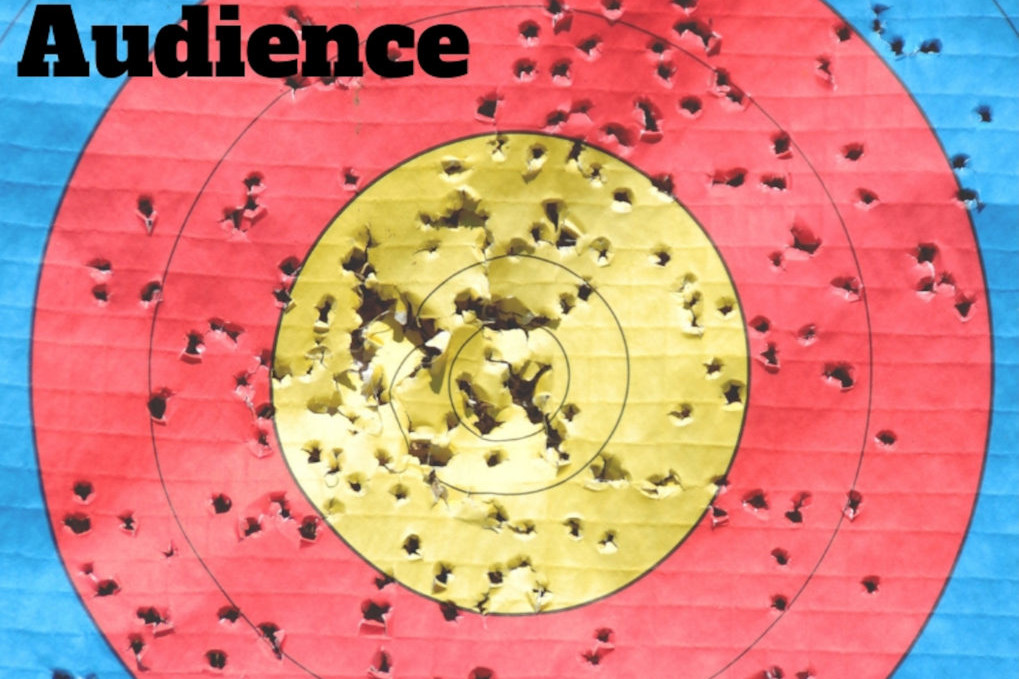Building a customer relationship is essential for any business, especially as data shows that repeat customers add significantly more lifetime value than new customers.
Educational content is one of the most valuable resources you can give customers to inform and persuade them in decision-making.
While your blog is a valuable resource for evergreen topics, tackling current events and emerging trends from an SEO perspective can be challenging.
This is where the power of non-promotional newsletters comes in. Not only are newsletters an invaluable resource for knowledge sharing, but they are also one of the powerhouses of our Lead Generation Strategies for capturing and nurturing existing leads that your business can implement.
The key is planning a successful campaign that walks the line between educational and promotional. The focus of any company’s newsletter is to spur brand awareness and position your brand as a thought leader in its space.
To become successful, here are just a few email marketing insights to help you start writing newsletters that will help create loyalty with existing customers and influence prospects.

The Importance of Newsletters for Branding and Lead Generation
Newsletters serve a dual purpose for businesses as a lead generation and lead-nurturing tool.
The former is accomplished by requiring an email address to sign up for a newsletter, thus allowing you to incorporate this user’s information into your CRM for future follow-up.
Depending on the customer’s relationship with your business, this information can be used to provide promotional and educational content in your newsletter.
Regarding lead nurturing, newsletters are educational tools that allow you to educate customers without necessarily selling them on anything.
This is important because it positions your brand as a thought leader in its industry and one with its finger on the pulse.
Where and How to Promote Your Newsletter
Before creating your newsletter, you need to get subscribers to market to.
Generating visibility for your newsletter via calls-to-action across your website and promoting it on social channels will help you acquire email sign-ups and build a subscriber list.
Your promotion strategy should span multiple online and offline channels to grow your list and maximize reach. Here are some of the most effective places to promote your newsletter:
Your Website
Include calls-to-action across your website for newsletter sign-ups on your:
- Your homepage and service pages (preferably at the bottom so you don’t take up valuable real estate)
- Blog sidebars or article footers (“If you like this content, subscribe for more!”)
- Exit-intent popups or slide-ins (if you want to be more aggressive, but make sure this is optional)
Be sure to clearly communicate the value of subscribing, such as exclusive tips, seasonal alerts, or local updates.
Social Media Platforms
Leverage your Facebook, Instagram, LinkedIn, and even Nextdoor presence to highlight newsletter content and drive sign-ups.
Pin a post about your newsletter, share previews of recent editions, or run a lead generation ad with a sign-up form built in.
Suppose your brand relies heavily on content creation, such as writing Substacks or blogs. In that case, then aggressively marketing your newsletter on social media will be a great way to promote increased readership.
Email Signature
Add a simple line to your team’s email signatures encouraging recipients to subscribe. Something like:
“Get monthly home tips & updates straight from the pros — [Subscribe to our newsletter]”
Blog Posts
Include in-line calls-to-action within blog content, especially on educational or evergreen posts.
Studies show that first-person CTAs tend to perform better.
Be creative and experiment with ideas, such as “Say Goodbye to the Bear Markets Forever–Teach Me How to Time Stock Market Trends and Make Millions.”
A/B test different CTAs to see which ones perform best and add the most sign-ups.
11 Tips for Writing Effective Newsletters
Now comes the time for the nitty gritty. Writing newsletters is not nearly as difficult as evergreen content and requires much less research.
Combining current events with evergreen knowledge and repurposed content can help you craft engaging newsletters that encourage user action with very minimal effort.
However, before we actually get down to writing, we need to think about our design and approach.
1. Find Your Audience: Knowing WHO to Market Your Newsletter To
In an ideal world, that killer CTA we just helped you craft would help scale an unlimited newsletter sign-up list you can market to in perpetuity. However, if you run a business that uses multiple email marketing efforts, including product promotions or general client information, it’s essential not to overmarket to your audience.
For example, if you have a list of emails from a cold calling list, does it make sense to hit them with a company newsletter without their knowledge? Probably not.
Therefore, segmenting your email lists by the right audiences is essential to make the most impact.
You’ll likely have a list of subscribers who will voluntarily sign up for your newsletter that you can market to, but is it worth adding current clients or prospective leads? We believe current clients are fair game if you add an easy option to unsubscribe.
Beyond this, you can segment different newsletter audiences based on content and client profiles. For example, we run two separate newsletters that include general content tips for all clients and subscribers, and we also run another one strictly for business professionals.
2. Build a Memorable Branded Design: Make It Visually Appealing
Design is important, especially when it comes to newsletters. You don’t want too many ideas jammed into one small page. Choose a niche focus, and develop core elements that will post with every letter.
For example, you can create a template like the following:
- Introductory story/trending news topic
- Related blog from your website
- Brief promotion related to a trending topic
- More news stories
- Blogs
- Closing CTA
Again, experiment with different formats until you create a consistent template that users expect and desire.
3. Craft Memorable Headlines: Boost CTR and Engagement
What good is an amazing newsletter if the title is boring and nobody will click on it?
In the content biz, we use what are referred to as trigger words designed to encourage user action. These include words and phrases, such as “free,” “professional,” and “revealing.”
However, you can go beyond this using language and design intended to elicit specific action. For example, we like using trigger phrases with provocative language, designed to create a sense of urgency in the reader. Here are some examples:
- Revealed: 5 AI Hacks Google Doesn’t Want You to Know
- COUNTDOWN TO DOOMSDAY: The Investment Strategy that Will Help You Beat the Coming Recession
- GROSS: How Ticks Are Making America Sick in Your Back Yard
Of course, you don’t want to necessarily be clickbait, so you’ll need to figure out a fine line between a captivating headline and a spammy headline.
4. Tell a Story: Create a Newsletter Theme or Thesis
The ideal newsletter will connect with readers and tell a story. That’s why current events work so well in newsletters, especially if they directly impact your audience.
The best newsletters we follow at ContentMender include personal anecdotes and directly tie into our industry, whether via personal experience or data that affects us.
Try approaching each newsletter with a theme or thesis and including supporting content, such as trending articles and blogs, that tell a story and inform the reader. They’ll be coming back for more!
5. Keep Newsletters Informative: Be the Expert
To reiterate, newsletters should be informative, not promotional. While the ending call-to-action or external link to your website is fine, readers expect newsletters to be informative, not commercially based.
Try to include facts and information that readers don’t quite understand or can find helpful, instead of repeating the same old boilerplate information they already get daily.
6. Keep a Consistent Posting Schedule: Monthly or Even Daily
Careful time management is a recipe for success, and keeping a steady schedule is essential for email marketing. Frequency matters; weekly, bi-weekly, monthly, whatever content schedule you want to keep, make sure it’s consistent.
Failing to keep up with that schedule will cause readers to lose interest and even unsubscribe if your newsletters appear too random.
7. Experiment with Different Formats and Platforms: LinkedIn Is Big!
While a general website newsletter is great for most brands, try experimenting with different platforms. Substack and LinkedIn are great platforms, especially if you have a personal brand tied to your professional one, and you want to promote thought leadership.
8. Break Up Text: Let Readers Jump to Parts They Want to Read
Regarding careful design, try breaking up your text using headers and smaller paragraphs that make newsletters more digestible. The last thing someone wants with their morning coffee is a giant block of text that they have to zoom in on and read carefully.
Newsletters should be designed for informative, but casual reading that can give readers just what they want without too much effort. Think of it like daytime news with small stories broken up into digestible chunks.
9. Incorporate Current Events and Trends: Keep Readers in the Loop
As previously mentioned, incorporating current events is very important for newsletters and showcases your brand’s finger on the pulse of its industry in a way that traditional SEO content really doesn’t allow.
Tie in current events to your business and any content you have written to put a personal touch on it and keep your business top of mind.
10. Incorporate Different Media
Break up text with videos and images that make your content more consumable and a little less stale. Newsletters can even be a great place to promote trending YouTube videos, podcasts, or multimedia content your business has out there in the media ecosphere.
11. End Newsletters with a Strong Call-to-Action: Here’s Why Your Business Is Valuable
Newsletters are designed to be informative, but always remind clients and customers that your business has the answers to the chaos of the modern world.
Using the same formulas we listed above about creating CTAs, generate a strong call-to-action that will encourage users to buy certain products or schedule appointments with your business.
You’ll find that newsletters can end up being a valuable source of leads if done properly.
For help crafting killer newsletters that encourage signups and build leads, contact ContentMender for more help.
<CTA: Schedule My 60-Minute, No-Obligation Consultation>
FAQs
How often should I send out a newsletter?
It depends on your audience and bandwidth, but consistency is crucial. Monthly is a good starting point, though weekly or bi-weekly schedules can work if you have enough high-quality content to share.
What type of content works best in a newsletter?
Educational, timely, and relevant content performs best. This can include blog roundups, current events that relate to your industry, tips or how-to guides, and exclusive insights your audience won’t find elsewhere.
Can I promote my products or services in a newsletter?
Yes, but sparingly. Focus primarily on providing value through information. Promotional content should be secondary and framed in a helpful, not pushy, way.




